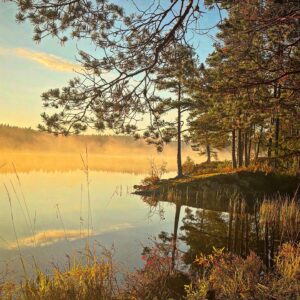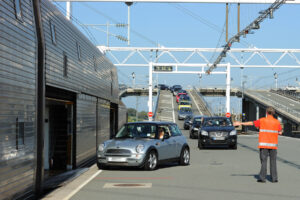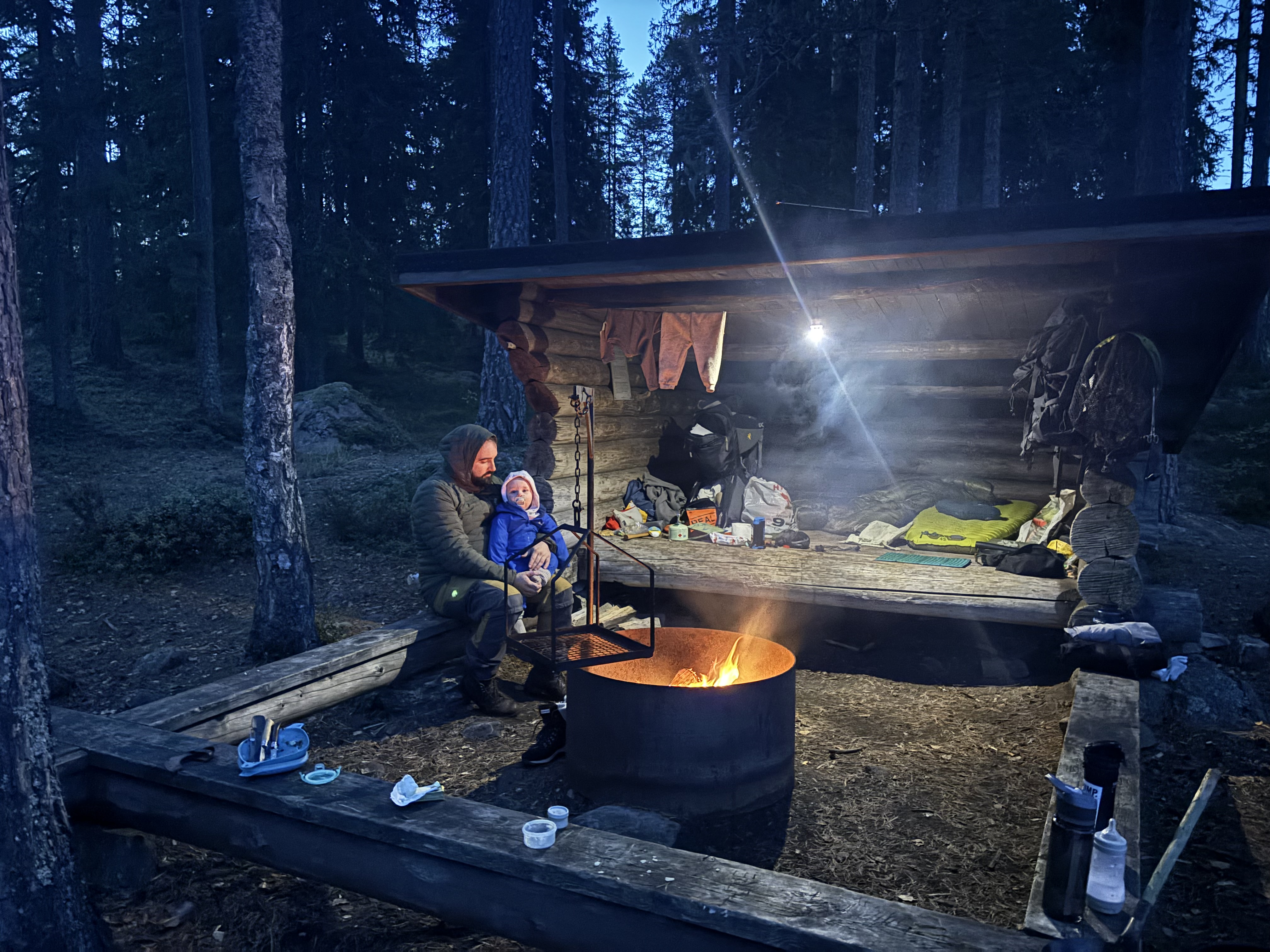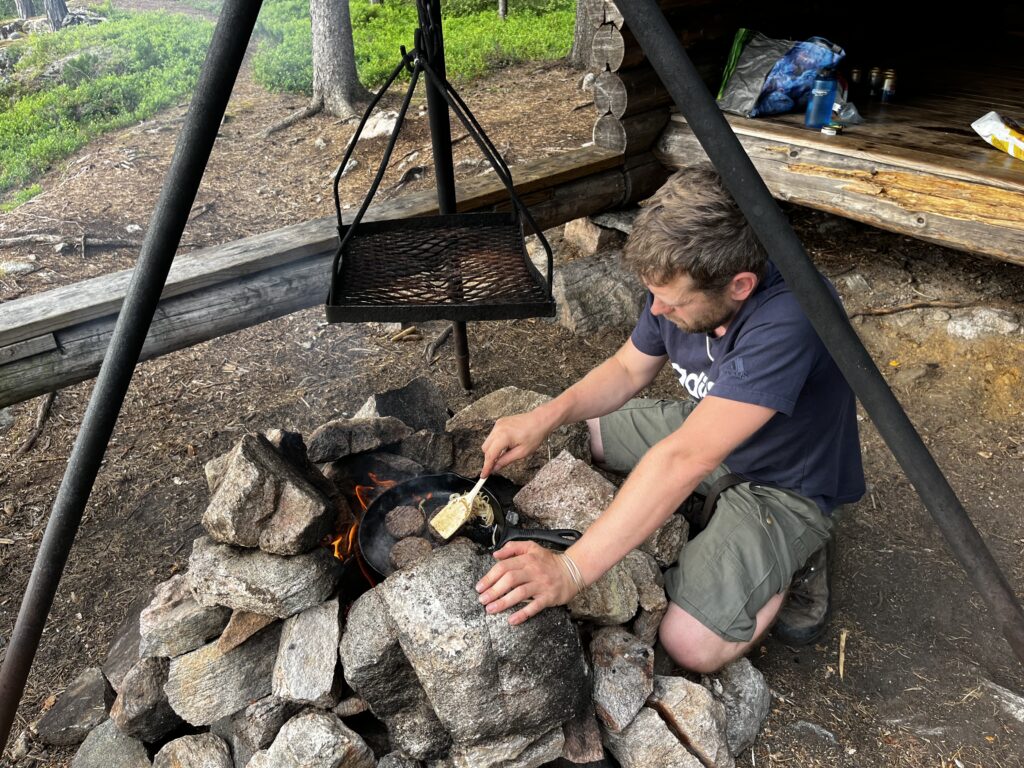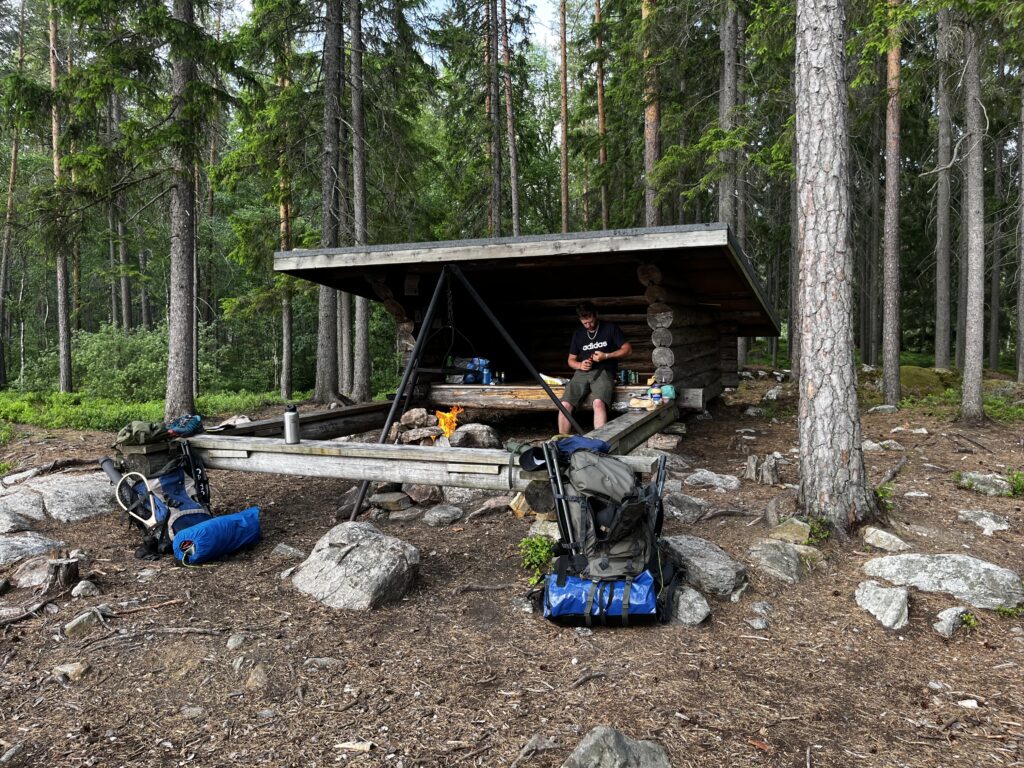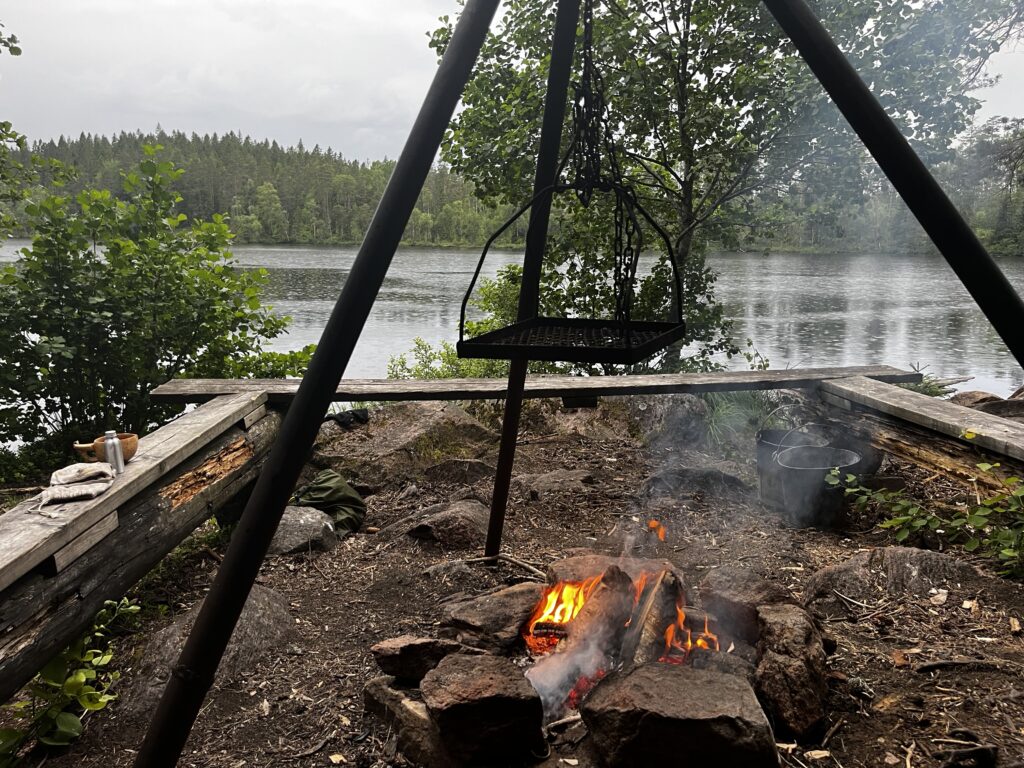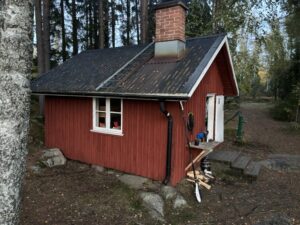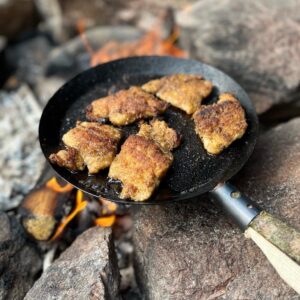Glaskogen. You wake in a hammock strung between two tall pines, the fabric swaying gently in the cool morning air. Below you, the lake is so still it mirrors the sky perfectly — a silver-blue sheet where sky and water become the same thing. For a moment you’re caught between sleep and waking, remembering a strange dream about paddling across the sky.
Table of contents
- 1. Introduction to Glaskogen
- 2. Why Glaskogen is the Perfect UK Escape
- 3. Getting to Glaskogen from the UK
- 3.2 Driving from the UK
- 4. Pre-Trip Planning
- 4.2 Revolut for Spending Money
- 4.3 eSIM for Data
- 4.4 Maps & Planning
- 5. Permits & Cards
- 5.2 Fishing Licence
- 6. Arrival at the Glaskogen Info Centre
- 7. Fire Status Flag
- 8. Staying at Glaskogen
- 9. Staying at the Wind Huts, Cabins Or Huts in Glaskogen
- 10. Shelter Etiquette
- Recommended Hiking routes in Glaskogen
- 12. Canoe Hire in Glaskogen
- 15. Canoe & Packraft Routes in Glaskogen
- 17. Cooking Your Catch in Glaskogen
- 19.1 Mobile Coverage in Glaskogen
- 19.3 Nearest Hospital (A&E) to Glaskogen
- 19.4 Knowing Your Location in Glaskogen
- 19.5 If You Need Help when in Glaskogen
- 19.6 General Safety Tips when in Glaskogen
- 20. Lakes, Lures & Laughter , A Packrafting tale around Glaskogen.
- 20.3 Where to Get the Glaskogen packrafting book
- 21.5 Need Trip Advice?
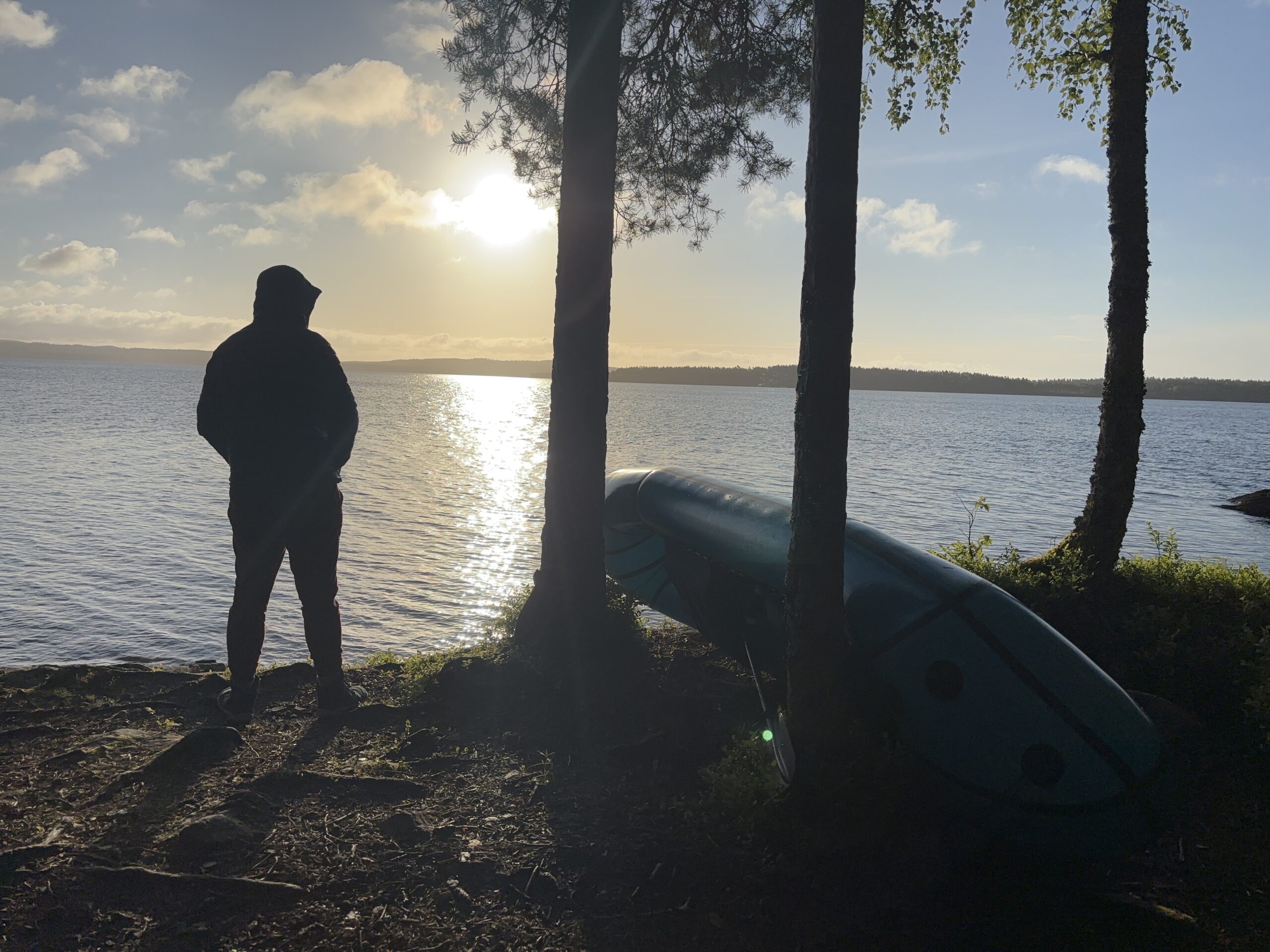
Then a loon calls from across the bay. The sound cuts through the quiet and pulls you back to where you really are: deep in the wilderness of Glaskogen, a nature reserve whose name translates from Swedish as the glass forest. It’s fitting — the lakes really do look like polished glass at sunrise.
You reach for the firewood you stacked the night before, and soon the smell of birch smoke drifts into the cold air. Bilberries crackle in the pan as you fry your morning pancakes. The day ahead is simple: paddle south, fish along the way, explore the bays, and drift between wind shelters under tall pines.
It’s the kind of morning that stays with you long after you leave — the peace, the pace, and the feeling that everything has slowed down enough for you to breathe properly again.
1. Introduction to Glaskogen
Glaskogen offers wilderness, quiet lakes, deep forests, wildlife encounters, true solitude, wild camping freedom, stunning paddling routes, and a feeling of real adventure.
2. Why Glaskogen is the Perfect UK Escape
Glaskogen Nature Reserve, covering 28,000 hectares of lakes and forest in western Sweden, is one of the easiest wilderness destinations for UK travellers seeking a true escape.
Why it Glaskogen works so well for UK visitors
- Only 2.5 hours from Oslo Airport
- Safe, well-managed wilderness
- Clearly marked trails, shelters, fire pits and cabins
- Excellent canoeing, packrafting and hiking
- Superb fishing (perch, pike, trout)
- Low cost to stay in the reserve
- Reliable mobile network
- Quiet even in summer
A surprising truth for UK travellers
For many people, getting here is cheaper and faster than driving to the Lake District or Scotland. A return flight to Oslo often costs less than the fuel needed for a round trip to the Highlands, and once you land it’s a smooth 2.5-hour drive on quiet Norwegian and Swedish roads. You avoid the long motorway hauls, traffic jams, booked-up car parks and crowded trails that dominate UK peak season.
Instead of losing a day to driving across Britain, you step off a plane and head straight into the Swedish wilderness — where within a few hours you can be paddling across still water or setting up a hammock beneath tall pines. Glaskogen offers more space, fewer people, and a far greater sense of escape, often with less cost and hassle than many domestic alternatives.
3. Getting to Glaskogen from the UK
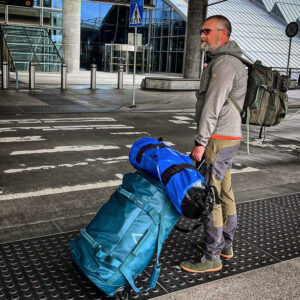
3.1 Flying to Oslo (Recommended)
Flying is the easiest and quickest way to reach Glaskogen.
- Fly to Oslo Gardermoen (OSL)
- Hire a car at the airport
- Drive time: ~2.5 hours to Lenungshammar
Car Hire Tips
Choose inclusive insurance that covers:
- Stone damage (common on gravel roads)
- Border crossing into Sweden
- Long stays in remote areas
Taxi Option
A taxi can be pre-booked:
Arvikabygdens Taxi
https://www.hitta.se/verksamhet/arvikabygdens-taxi-cpvhjnruv
3.2 Driving from the UK
Driving gives you flexibility and turns the journey into part of the adventure.
Step 1: UK → Mainland Europe
No direct ferries to Scandinavia — options are:
- Ferry to Hook of Holland, or
- EuroTunnel (LeShuttle)
Step 2: Two main routes into Scandinavia
Route A — Denmark → Sweden (Bridge Route)
UK → Europe → Germany → Denmark →
Øresund Bridge → Sweden → Värmland → Glaskogen.
Route B — Denmark → Norway → Sweden
UK → Germany → Denmark →
Ferry to Kristiansand (Norway) →
Drive to Horten → Ferry to Moss →
Cross into Sweden → Arvika → Glaskogen.
Why drive?
- Scenic fjords
- Excellent roads
- Easy access to supplies
- Ideal if you want to explore Scandinavia on the way
4. Pre-Trip Planning
4.1 Shopping at Charlottenberg
Located 45 minutes from Glaskogen, this border-town shopping centre is the perfect final stop.
Here you can buy:
- Food & snacks
- Fresh game meats (moose, deer, reindeer)
- Camping gear
- Gas (Jula)
- Fishing tackle
- Clothing
- Alcohol (Systembolaget – the only legal retailer)
Sweden is a cashless country
Card or contactless everywhere.
4.2 Revolut for Spending Money
A Revolut account is helpful for Sweden:
- Avoids conversion fees
- Lets you store SEK in advance
- Works everywhere in Sweden
- Easy to split bills with friends
4.3 eSIM for Data
Some UK networks charge for roaming.
A European eSIM ensures:
- Reliable maps
- Emergency access
- No unexpected charges
4.4 Maps & Planning
Buy the official map:
https://www.glaskogen.se/en/prepare-your-visit/
The map includes:
- Wind shelters
- Cabins
- Fire pits
- Trails
- Numbered junctions
- Portage routes with difficulty grades
Research Video Playlist
Questions?
- Info Centre: glaskogen@arvika.se
- Vildmark: martin@vildmark.co.uk
5. Permits & Cards
5.1 Glaskogen Card
Buy online (recommended if arriving late):
https://www.glaskogen.se/en/glaskogen-card/
Covers:
- Firewood
- Fire pits
- Toilets
- Wind shelters
- Overnight cabins
- Waste points
Rules:
- Max 2 nights per place
- Not valid for Lenungshammar campsite
- Children under 16: free
- Supports conservation and maintenance
5.2 Fishing Licence
Available online or at the Info Centre
Buy via iFiske:
https://www.ifiske.se/en/fishing-permit-glaskogen.htm
6. Arrival at the Glaskogen Info Centre

The Info Centre at Lenungshammar offers:
- Maps & permits
- Gas
- Fishing tackle
- Live worms
- Knives, axes
- Hotdog sausages, bacon, snacks
- Dill crisps (recommended)
- Ice creams
- 3.5% beer
7. Fire Status Flag
The Info Centre and certain places display the current fire ban flag.
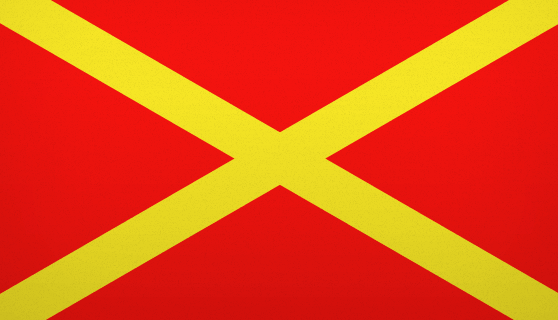
8. Staying at Glaskogen
Cottages
If you don’t fancy pitching a tent or hanging in a hammock every night, Glaskogen has a handful of cosy cottages dotted around Lenungshammar and the surrounding forest. They’re simple, warm and right in the heart of the reserve, making them a great base for day-hikes or lake missions.
Most cottages come with beds, heating, a basic kitchen setup and access to toilets and showers nearby. They’re not luxury cabins — they’re more like classic Swedish stugor built for people who want a roof over their head but still spend the day outdoors. You can rent canoes and firewood from the nearby service point, and there’s a small café during the season.

Cottages book up fast in summer and early autumn, so it’s worth reserving ahead if you want guaranteed comfort. For the rest of the year it’s usually quieter, especially mid-week.
Camping.
Camping at Lenungshammar
The main campsite offers:
- Tent pitches
- Caravan & motorhome spaces
- Showers
- Toilets
- Waste station
- Small cabins
Wild Camping in Glaskogen
Wild camping is permitted throughout Glaskogen, provided visitors respect the rules of the nature reserve, follow Leave No Trace principles and hold a valid Glaskogen Card. The reserve is designed for low-impact overnight stays, with clear guidelines in place to protect the forest and keep the experience safe and sustainable for everyone.
Although Glaskogen contains many designated wind shelters and cabins, wild camping gives you far more freedom — allowing you to choose quieter spots, explore deeper sections of forest, and enjoy peaceful mornings beside small lakes that are rarely visited.
Where You Can Wild Camp
- You may wild camp anywhere within the reserve except:
- Directly beside private dwellings
- Inside restricted conservation zones (marked on the map)
- On beaches or fragile bogland
- Within excessive proximity to official shelters (give them reasonable space)
- You may stay up to two nights per spot, which helps protect ground vegetation and prevents overcrowding in popular zones.
Fire Rules for Wild Camping
- Fires are only permitted at official fire pits and only when the fire-status flag allows.
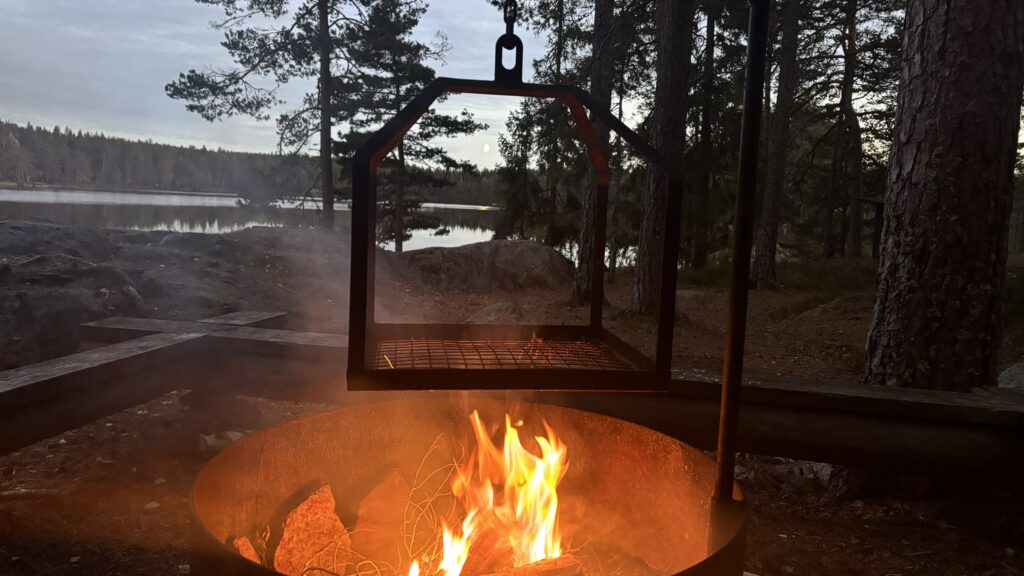
- You must not collect natural wood. Only the wood supplied at fire stations can be used.
- During dry periods, a red fire-ban flag means no fires are allowed anywhere in the reserve.
For wild campers, this means planning meals that can be cooked on:
- Gas stoves
- Alcohol stoves
- Multifuel stoves
(Always check the fire-status display at the Info Centre before entering the reserve.)
Why Hammock Camping Is a Great Idea in Glaskogen
Hammock camping is often the best and most practical way to wild camp here — especially around the lakes and forest ridges.
1. Flat ground is limited
The forest floor is often:
- Root-covered
- Soft with moss and lichen
- Uneven
- Narrow between rocks and trees
Hammocks allow you to camp comfortably in places where pitching a tent would be impractical or impossible.
2. Shelters and flat tent sites fill quickly in summer
In July and August, wind shelters and the few good tent spots near them can be occupied.
A hammock gives you complete flexibility — you can sleep almost anywhere as long as you respect the 2-night rule.
3. Reduced impact on the ground
Hammocks leave very little trace, especially when using wide tree straps that protect bark.
4. Better airflow and fewer insects
Swedish summers can be warm and humid, and mosquitos can be heavy around water. Hammocks with integrated bug nets help keep insects out while improving airflow and reducing condensation compared to tents.
5. Warmer and drier in poor weather
With a proper tarp setup:
- You stay elevated above wet ground
- You avoid water pooling under your tent
- You get more ventilation and less internal dampness
A good tarp also doubles as a sheltered cooking area during rain.
6. Amazing lakeside mornings
Many of Glaskogen’s best wild camping spots are tight strips of forest right along the shoreline. Hammocks let you sleep right in the pines with uninterrupted views of:
- Mist lifting off the lakes
- Loons calling at dawn
- Perfect mirrored water
It’s one of the signature Glaskogen experiences.
Hammock Camping Tips for Glaskogen

- Bring tree-friendly straps (minimum 2–3 cm wide).
- Use a mosquito net in summer (June–August).
- An underquilt or insulated mat is recommended — nights can be cold.
- Always hang well away from dead branches (“widow-makers”).
- Keep your tarp tight and angled low if wind is expected.
- Follow the same Leave No Trace rules as ground camping.
Quiet Hours and Shared Spaces
Even when wild camping, it’s expected that:
- Noise remains low after evening hours
- Fires and activities do not disturb wildlife
- You keep a respectful distance from other tents, shelters or hammock lines
Glaskogen is a quiet reserve, and maintaining that atmosphere is an important part of the experience.
9. Staying at the Wind Huts, Cabins Or Huts in Glaskogen
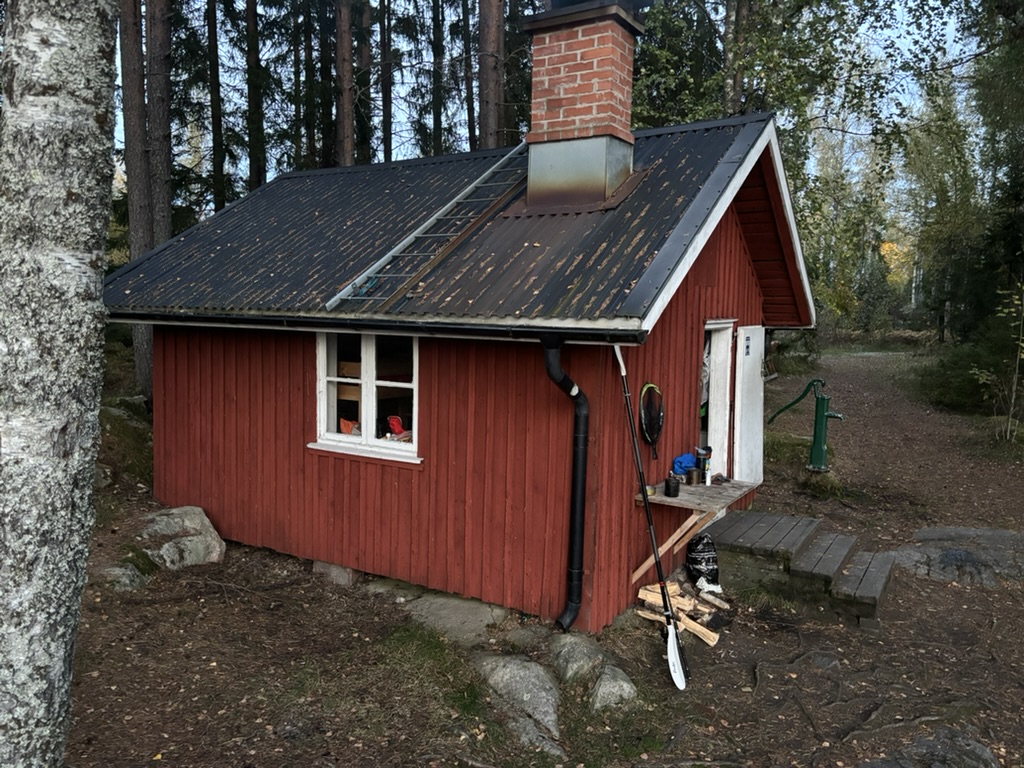
Shelter Types
Wind Shelters (Vindskydd)
Three-sided wooden shelters for overnight use.
Day Shelters
Smaller versions — ideal for lunch or bad weather.
Cabins
Simple huts with bunks and a stove.
Huts
Simple huts with space for sleeping (some have stoves).
10. Shelter Etiquette
- First come, first served
- Expect others to share the area — this is normal in Sweden
- Keep noise low
- Only burn provided firewood
- Leave shelters clean
- Respect wildlife and other visitors
11. Hiking in Glaskogen
Hiking is one of the best ways to experience Glaskogen. The reserve’s landscape is shaped by lakes, forest ridges, quiet valleys and long stretches of untouched pine and spruce. Many areas cannot be reached by canoe or packraft, and hiking opens the door to some of the most peaceful and secluded parts of the reserve.

Why Hiking is a Good Idea in Glaskogen
1. Access to Remote Areas
Several of Glaskogen’s most beautiful lakes, bogs and viewpoints sit far from the canoe routes. Hiking lets you reach:
- Hidden tarns
- High ridges with panoramic views
- Deep forest interiors
- Remote wind shelters that see very few visitors
2. Well-Marked and Maintained Trails
The entire reserve uses a clear and simple numbering system. Trail junctions match the official Glaskogen map, making navigation straightforward even for first-time visitors.
Most trails are natural forest paths — expect roots, rocks, and occasional muddy patches — but they are consistently marked and easy to follow.
3. Ideal for Day Walks and Multi-Day Trips
Whether you want:
- A short walk from Lenungshammar
- A loop around a small lake
- A full multi-day hike linking several wind shelters
Glaskogen has routes for every level.
4. Abundant Wind Shelters and Rest Spots
Hiking in Glaskogen is more comfortable than many wilderness areas because you regularly encounter:
- Wind shelters (for overnight use)
- Day shelters (smaller, for lunch or weather protection)
- Fire pits (when fires are permitted)
- Toilets
These give structure to long hikes and safe places to rest in bad weather.
5. Great for Wildlife and Nature Photography
Moving quietly on foot gives you a much better chance of seeing:
- Moose
- Roe deer
- Beavers (especially near small lakes)
- Owls
- Woodpeckers
- Capercaillie in quieter zones
Mornings and late evenings are especially rewarding.
6. Escaping the Crowds
Even in peak season, many hiking trails are empty.
Most visitors stay near the main lakes — once you step onto a forest path, the sense of solitude increases dramatically.
7. Perfect for Hammock Camping
Many hiking routes pass through ideal hammock terrain. If flat tent spots are taken or unsuitable, a hammock gives you far more flexibility to camp anywhere permitted.
Recommended Hiking routes in Glaskogen
Wind Shelter 39
A peaceful lakeside location far from busy waterways. Excellent for photography and early-morning wildlife.
Bergtjärnen (Wind Shelter 25)
A secluded, atmospheric lake reached by hiking through deep forest. The shelter sits right by the water and feels much more remote than most easily accessed spots.
Small Lakes North of Lenungshammar
Several unnamed tarns lie up small trails — perfect for quiet day hikes or lunch stops.
Ridge Paths Toward Stora Gla
These give you elevated views across the treeline, especially striking near sunset.
Trails are well marked and correspond to map numbers.
Most Secluded Spots
- Bergtjärnen
- Western Assjön
- Osjön
- Small unnamed tarns
- Island camps on Stora Gla
12. Canoe Hire in Glaskogen
If you’re heading to the lakes of Glaskogen, hiring a canoe is a brilliant way to explore. At the main hire point, the Glaskogen Nature Reserve Foundation offers both 1-person and 2-person kayaks (plastic, beginner-friendly with rudders) and aluminium canoes (models like Linder Inkas 525 or Osagian 17 STD) complete with paddles, life jackets, sponge and a cart.

Important tip: This hire service can get really busy, especially in high season (summer/autumn) and weekends. So book early if you can. If you don’t pre-book you risk arriving and finding nothing available.
They also have safety rules — for example, canoe hire doesn’t begin until around mid-May (depending on water temperature).
When you’re planning your route, be aware: there are shorter tours (2–3 hrs), medium (1–2 days), and longer multi-day ones (2–5 days) across the lakes and channels of Glaskogen. The right craft makes all the difference.
13. Packrafting in Glaskogen
Packrafting combines hiking and paddling, allowing travellers to explore both the main lakes and the smaller, lesser-visited waters deep in the forest. Because packrafts are lightweight and easy to carry, they make portages simple and open up opportunities that traditional canoes cannot reach



Why packrafting works well here
- Easy access to small, isolated lakes
- Simple portages between waters
- Excellent for fishing where bank access is limited
- Stable and suitable for mixed weather
- Ideal for travellers arriving by plane
See the packrafting guide
14. Packrafting Gear Recommendations
Packrafts
Anfibio Nano RTC
Ultra-light option for hikers prioritising minimal weight.
https://www.packrafting-store.de/?wsa=cj1bi35ed12fd/anfibio-nano-rtc_1
MRS Microraft
A versatile, durable all-rounder with optional spray deck — ideal for mixed hiking and paddling in Glaskogen.

Anfibio Omega C2+ (Tandem)
Perfect for two travellers looking for speed and stability.
https://www.packrafting-store.de/?wsa=cj1bi35ed12fd/anfibio-omega-c2_1

Essential Accessories
- Lightweight 4-piece paddle
- PFD (life jacket)
- Drybags or TubeBags
- Small repair kit (Gorilla Tape / Aquasure)
- Neoprene or quick-dry footwear
- Warm layers (nights can be cold even in July)
15. Canoe & Packraft Routes in Glaskogen
Below is an overview of the main multi-day routes through Glaskogen.
Route Difficulty Table
| Route | Difficulty | Nights | Notes |
|---|---|---|---|
| Övre Gla Loop | ★☆☆ Beginner | 2–3 | Sheltered and accessible |
| Lelången Loop | ★★☆ Moderate | 3–4 | Includes a long portage |
| Stora Gla Expedition | ★★☆ Moderate (weather dependent) | 5–6 | Large lake; check wind forecast |
15.1 Övre Gla Loop (2–3 nights)
A sheltered route suitable for beginners or those wanting relaxed paddling.
Highlights:
- Start at Lenungshammar
- Cabin 26 near the start (useful if beginning late)
- Shelter 53 (note: seagulls often nest nearby in summer)
- Cabin 23 (bunks + stove)
- Paddle around Gladakern and loop back to the Info Centre
15.2 Lelången Loop + Wild Camp (3–4 nights)
(Featured in Lakes, Lures & Laughter)
This scenic, varied loop offers wind shelters, calm bays, and a chance to enjoy a genuine wildcamp on the edge of the reserve.
Suggested Itinerary:
- Night 1: Wind Shelter 28 (two shelters, large space)
- Night 2: Wind Shelter 31
- Portage: Long portage towards Assjön
- Wildcamp: West side of Assjön (outside main reserve; collect your own firewood)
- Night 3: Wind Shelter 29
- Optional: Wildcamp at Osjön or make the long portage back to Shelter 28
This entire journey is described in the book Lakes, Lures & Laughter, including the portages, fishing, and the mishaps that tend to make Glaskogen adventures memorable.
🎬 Watch the trip video:
https://youtu.be/bOf2iY2kzc4
📕 Paperback:
https://vildmark.co.uk/lakes-lures-laughter/
15.3 Stora Gla Expedition (5–6 nights)
A longer, more exposed journey across the largest lake in the reserve.
Route Outline:
- Day 1: Walk to portage → Shelter 7
- Day 2: Shelter 8 (two huts)
- Day 3: Shelter 9 or 10
- Day 4: Shelter 12
- Day 5: Shelter 14
- Day 6: Secluded island camp (fires only when permitted)
Important Note
Stora Gla is a big, open lake.
Always check wind and weather forecasts before setting out and adjust your route if needed.
16. Fishing in Glaskogen
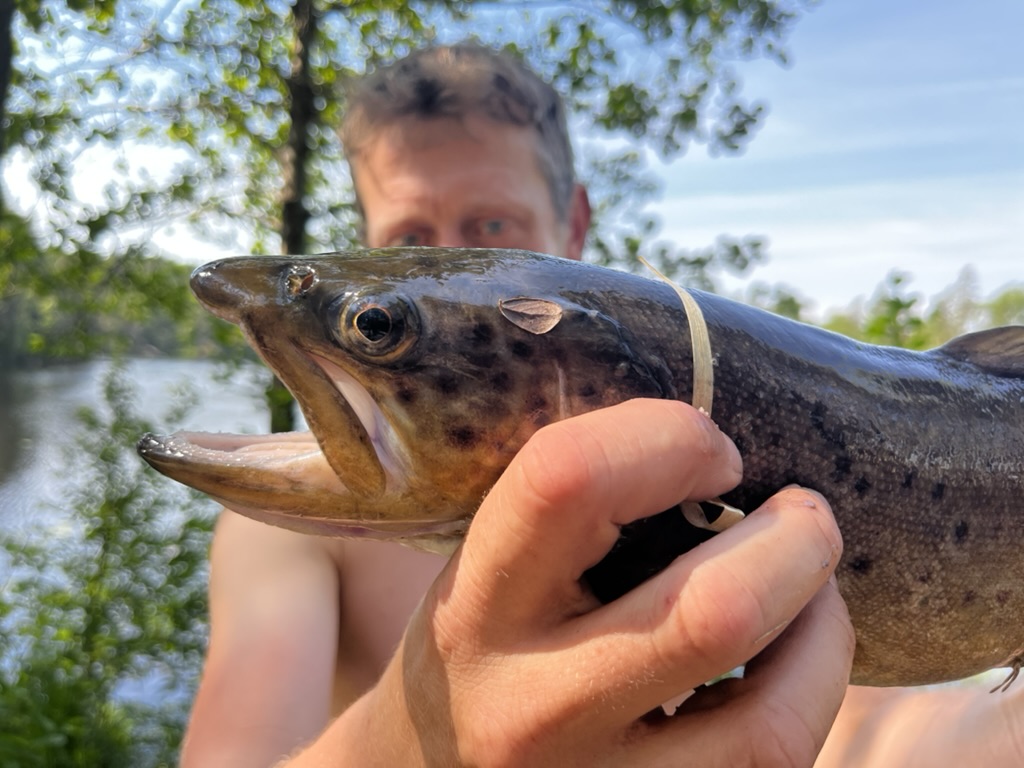
Glaskogen contains numerous lakes with healthy populations of:
- Perch
- Pike
- Trout
- Roach
Fishing is permitted with a valid licence online, info centre or the app (iFiske).
Live Worms
Available at the Info Centre. Highly effective for perch, trout, and exploratory fishing.
Tackle Suggestions when fishing in Glaskogen
Rigged & Ready Travel Rods
https://riggedandready.net
Recommended:
- X5 Adventure Rod — versatile all-rounder
- Predator Max — for pike and heavy lures
- FishRig 180 — compact, ideal for tight access and hiking
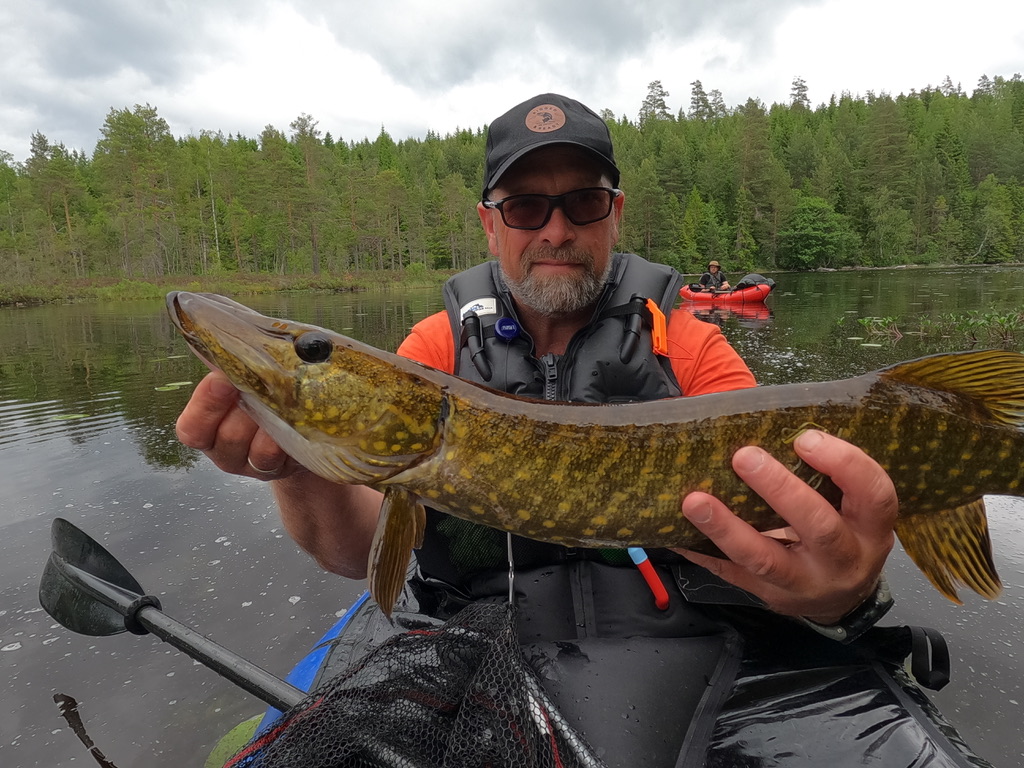
Lures
- Small spoons
- Soft plastics
- Spinners
- Surface lures (summer)
- Wire traces for pike
17. Cooking Your Catch in Glaskogen
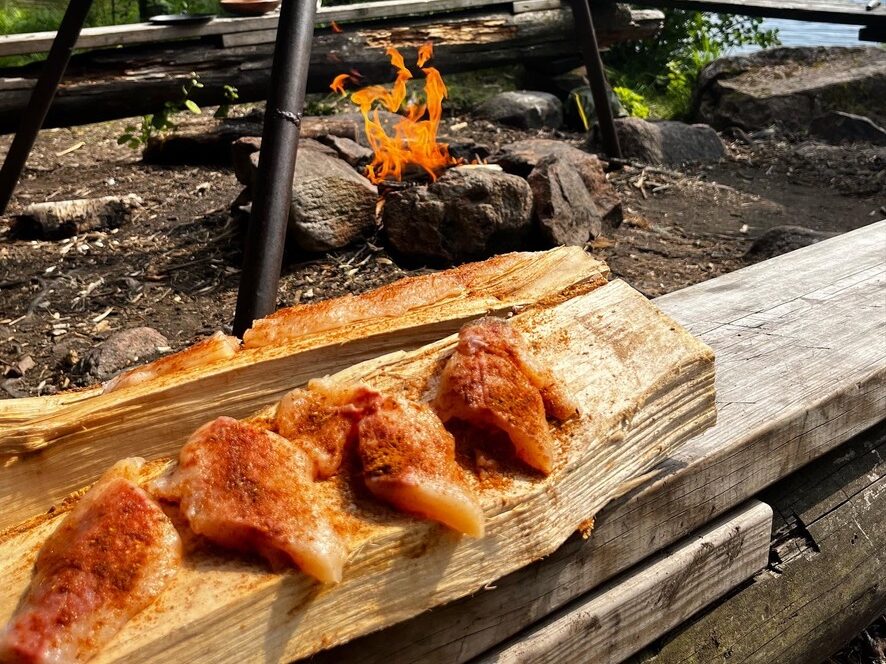
Perch
Excellent fried with flour or breadcrumbs.
Pike
Delicious but boney — double-salt before cooking and remove the Y-bones.
Coating Ingredients
Bring a small bag of flour or breadcrumbs for cooking.
18. Bushcraft & Camp Cooking Essentials
Recommended items:
- Small hatchet
- Bushcraft knife
- Frying pan
- Gas stove
- Dry clothes
- Cordage / paracord
Kolbullar (Kôlbullar) — Traditional Swedish Camp Pancake

Ingredients:
- Flour
- Water
- Salt
- Bacon/lardons
- Butter/oil
Method:
- Fry the bacon
- Mix thick batter
- Pour batter over bacon
- Fry on both sides
- Serve with jam
19. Emergencies & Safety in Glaskogen
Despite being a large wilderness area, Glaskogen is generally safe and accessible. With good preparation and a clear understanding of the environment, emergencies are rare — but knowing what to do is essential.
19.1 Mobile Coverage in Glaskogen
There is good mobile signal across most of the reserve, especially around:
- Lenungshammar
- Stora Gla
- Övre Gla
- Lelången
- Higher ridges and open shores
Some low valleys and dense forest pockets may temporarily weaken coverage, but full blackout zones are uncommon.
Important Tip when in Glaskogen — Set up an eSIM before arrival
UK travellers may face roaming charges.
A European eSIM ensures:
- Reliable data
- Full map access
- No unexpected fees
- Extra safety in remote areas
19.2 Emergency Number: 112
In Sweden, all emergencies use 112.
This connects you to:
- Ambulance
- Police
- Fire & rescue
- Wilderness assistance
- Coastguard (relevant for big lakes)
Operators speak excellent English.
Always call if unsure — they will assess the situation and guide you.
19.3 Nearest Hospital (A&E) to Glaskogen
The nearest Accident & Emergency department is:
Arvika Hospital (Arvika Sjukhus)
Approx. 35–45 minutes from Lenungshammar by car.
This is the closest full emergency facility.
19.4 Knowing Your Location in Glaskogen
During an emergency, giving an exact location is crucial.
Recommended methods:
What3Words (W3W)
Recognised by Swedish emergency services.
Open app → tap location → read the three-word code.
GPS Coordinates (Latitude / Longitude)
Works offline using Google Maps or offline map apps.
Shelter Numbers
Every wind shelter and cabin has a number.
Emergency teams know these locations precisely.
Trail Junction Numbers
Major junctions correspond to map numbers.
19.5 If You Need Help when in Glaskogen
- Move to a safe area (shelter, clearing, lake edge).
- Try to reach higher ground for signal.
- Call 112.
- Provide:
- Your condition
- Exact location
- Group size
- Hazards
- Stay in place unless instructed otherwise.
Rescuers may arrive by:
- Road vehicle
- Foot patrol
- Off-road quad
- Rescue boat (for larger lakes)
19.6 General Safety Tips when in Glaskogen
- Always wear a PFD on lakes
- Check wind forecasts before paddling
- Carry a fully charged phone and power bank
- Keep an offline version of your map
- Inform someone of your planned route
- Conduct daily tick checks
- Stay hydrated
- Be mindful of cold water temperatures
20. Lakes, Lures & Laughter, A Packrafting tale around Glaskogen.

Lakes, Lures & Laughter is a personal story built around the wilderness of Glaskogen — from still mornings on Lelången to spontaneous swims, fishing mishaps, and the quieter moments that define time spent in the forest.
The book follows a real packrafting expedition through the reserve, including the full Lelången Loop, and captures the tone, humour and surprises you often experience on a multi-day journey.
20.1 Excerpt from the Book
“We dragged our packrafts into Lelången as the mist lifted, the lake still as steel. We drifted between pines and quiet reedbeds until the wind arrived without warning and spun us like confused mayflies. That night, after a long portage and a failed attempt at catching dinner, we sat by the fire eating sausages and laughing at the day — reminded that the best trips aren’t perfect, just unforgettable.”
20.2 Watch the Lelången Trip Video
🎬 YouTube:
20.3 Where to Get the Glaskogen packrafting book
📕 Paperback:
https://vildmark.co.uk/lakes-lures-laughter/
Frequently Asked Questions – Glaskogen Nature Reserve
Where exactly is Glaskogen?
Glaskogen Nature Reserve is in western Värmland, close to the Norwegian border. Most people enter through Arvika or Årjäng.
What is the nearest town to Glaskogen?
Arvika is the closest main town. It has supermarkets, outdoor shops, cafés, restaurants, fuel stations, a pharmacy and a Systembolaget.
What about Charlottenberg?
Charlottenberg is on the route from Oslo. It has a large shopping centre, supermarkets, fuel, a pharmacy and places to eat. The nearest Systembolaget is in Arvika.
Do I need a Glaskogen Nature Reserve card?
Yes. The Glaskogen Card is required if you camp, fish, use shelters or fire pits. You can buy it online or at the information centre in Lenungshammar.
Is wild camping allowed in Glaskogen?
Yes. Wild camping is allowed under Sweden’s Allemansrätten, as long as you camp responsibly and follow local rules.
Is hammock camping a good idea?
Definitely. Glaskogen’s forests are full of strong pines and birch trees, making it perfect for hammock camping. It also keeps you off wet or uneven ground.
Why is hiking in Glaskogen a good idea?
There are over 300 km of marked trails linking lakes, viewpoints and shelters. The terrain mixes deep forest, ridges and shoreline paths — ideal for day hikes or multi-day routes.
Can you stay in cottages in Glaskogen?
Yes. There are simple cottages around Lenungshammar with beds, heating and basic kitchen facilities. They book up fast in summer, so reserve early.
How does canoe hire work in Glaskogen?
Canoe and kayak hire is available at the main service point. Choices include aluminium canoes and 1–2 person kayaks, with paddles and safety gear included. It gets busy during summer and weekends, so booking early is recommended.
21.5 Need Trip Advice?
If you have questions about planning your Glaskogen adventure — routes, packrafting tips, fishing advice, or general travel planning — feel free to get in touch.
or visit the Glaskogen website


